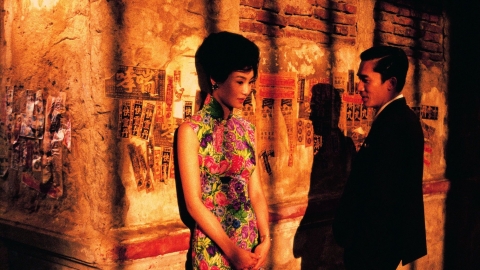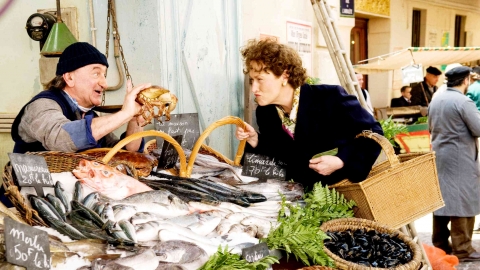The moonlight shining brightly in the night sky has been depicted by artists all over the world for centuries. The magical beauty of the moonlight, rich in spiritual and philosophical meanings, has made people stop to look and admire, through which artists have expressed their works of poetry and paintings that have been immortalized forever.
Therefore, moonlight has become a familiar image in paintings and woodblock prints of the ukiyo-e genre in Japan in particular and East Asian paintings in general.
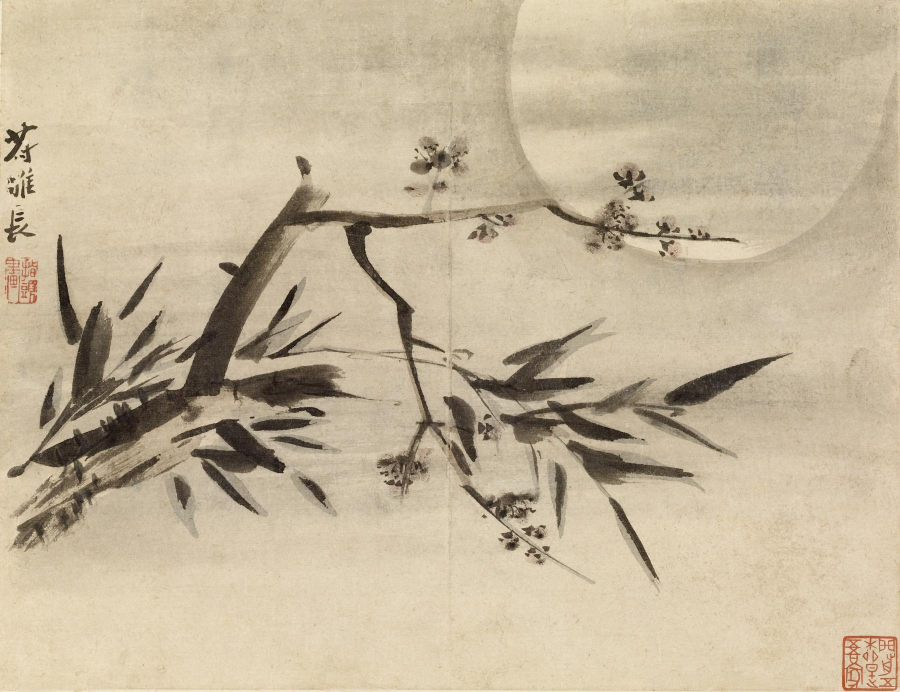
Bamboo, Plum Blossom and the Moon (Cao Ky Boi)
For centuries, the image of a talented man and a beautiful woman admiring the moon has been a familiar theme in Chinese painting, mostly in landscape paintings. The moon is often painted in the distance, small and lost among the other details of the painting, along with a poem that explains the work. The vastness of all things in the painting, the great distance between the moon and the person are the outstanding features of Chinese landscape paintings, to depict the humility of the character in the middle of a vast landscape, also to let the viewer seek solace in the quiet, peaceful space filled with moonlight and immersed in their own thoughts.

Full Moon and Autumn Flowers (Ogata Gekkō)
Meanwhile, Japanese paintings often depict a giant moon obscured by willow branches or clouds. The unique position of the moon in Japanese paintings originates from ancient mythology and Shinto beliefs, according to which the Japanese believed that there were three gods in the sky: the sun goddess Amaterasu, the storm goddess Susano-o and the moon goddess Tsukuyomi, who ruled the night with boundless power. Therefore, people will easily come across paintings of the sun and the moon in many ancient temples in Japan. Later, in the Kamakura period (1185 - 1333), Japanese Noh plays and rock gardens became popular. Many people often held moon-viewing parties, drank wine, and wrote poems in their gardens, making the moon continue to be a favorite subject in poetry and painting.
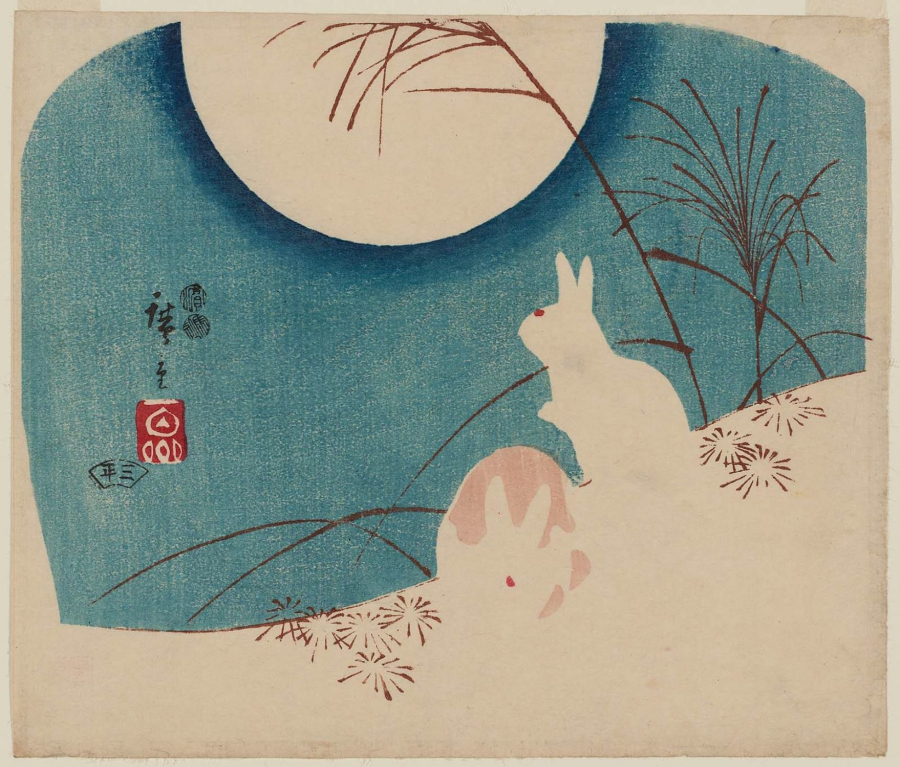
Rabbit Gazing at the Moon (Utagawa Hiroshige)
By the Edo period (1603 - 1868), the ukiyo-e woodblock print movement had become popular throughout Japan and was mass-produced for public consumption. In the 1860s, the popularity of ukiyo-e began to spread to the West, creating a strong influence and forming the Japonisme (Japaneseism) trend among Western Impressionist painters such as Vincent van Gogh, Edgar Degas and Claude Monet.
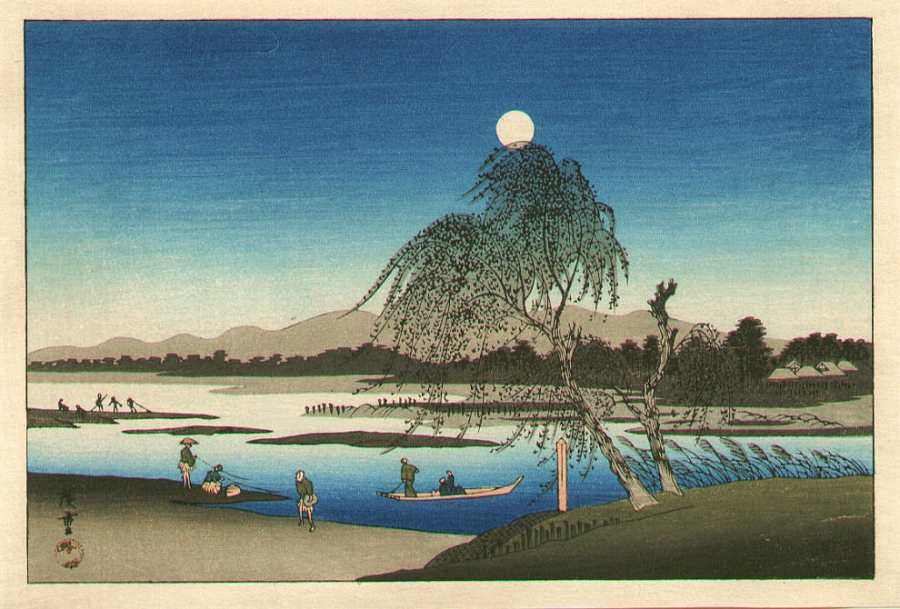
Autumn Moon over the Tama River (Utagawa Hiroshige)
Utagawa Hiroshige is considered the last great master of ukiyo-e. He is primarily known for his calm, emotional depictions of nature. His work is highly realistic, with subtle use of color and a heavy emphasis on mood. Mist, rain, snow, and moonlight are prominent themes in his paintings.
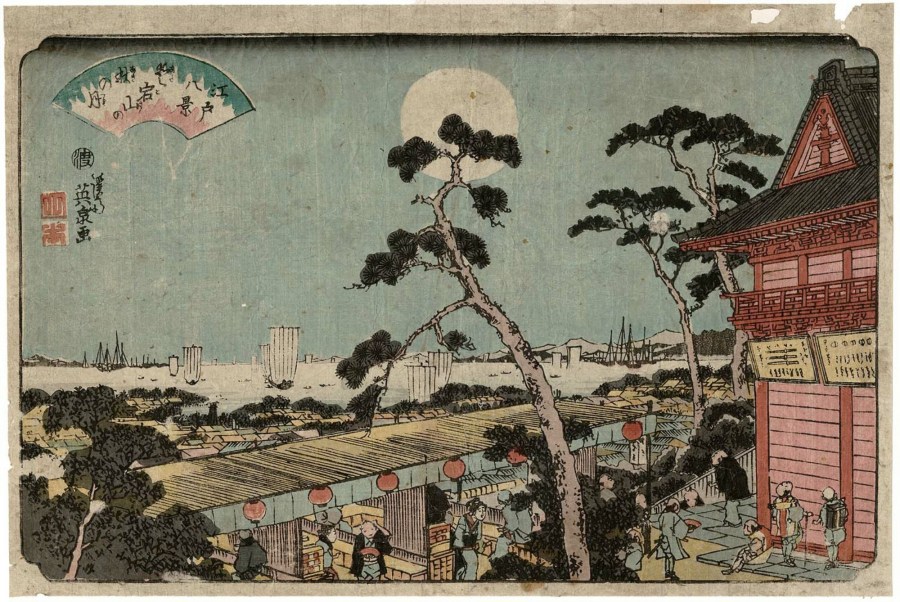
Autumn Moon over Atago Hills (Keisai Eisen)
Meanwhile, Keisai Eisen's works focused mainly on bijin-ga (beautiful woman paintings) depicting beautiful women from the pleasure world of kabuki theater, courtesans, and geisha of the brothels. Perhaps that is why he is considered a master of the "decadent" Bunsei Era, which lasted from approximately 1818 to 1830. Amidst this enchanting scene, Eisen's moon appears still full, full, and shining brightly with serenity.

Autumn Moon over the Sumida River (Toyohara Chikanobu)
Toyohara Chikanobu, commonly known by his pen name Yōshū Chikanobu, was a painter during the Meiji period. He was originally a soldier, but his paintings extolled the spirit of hedonism, with men and women enjoying the moon, snow, cherry blossoms, maple leaves, singing, drinking, and melancholy in a floating world, unconcerned with the prospect of impending poverty, lively and carefree. It can be seen that his works mixed with Western influences, recording the chaotic period of Japan before entering the modern period of Meiji, when the moon was no longer a full circle but became a layer of gentle, dim light.

Autumn Moon at Tamagawa, Two Fishing Boats at Night (Utagawa Toyokuni II)
Utagawa Toyokuni II was a pupil, adopted son and later son-in-law of Toyokuni I. Like his teacher, his style was marked by a profound application of Western-style perspective techniques, which was considered an innovation in the Japanese art world. His paintings were bolder and more sensual than those of his predecessors, whether they were landscapes or kabuki actors, warriors or legendary anecdotes. Without shyness and reserve, silence served as a backdrop for the landscape, the moon in the paintingAutumn Moon in TamagawaHis plump and white skin blended with the snow on the mountain top, clearly reflecting the silhouette of a fishing boat at night on the calm river.
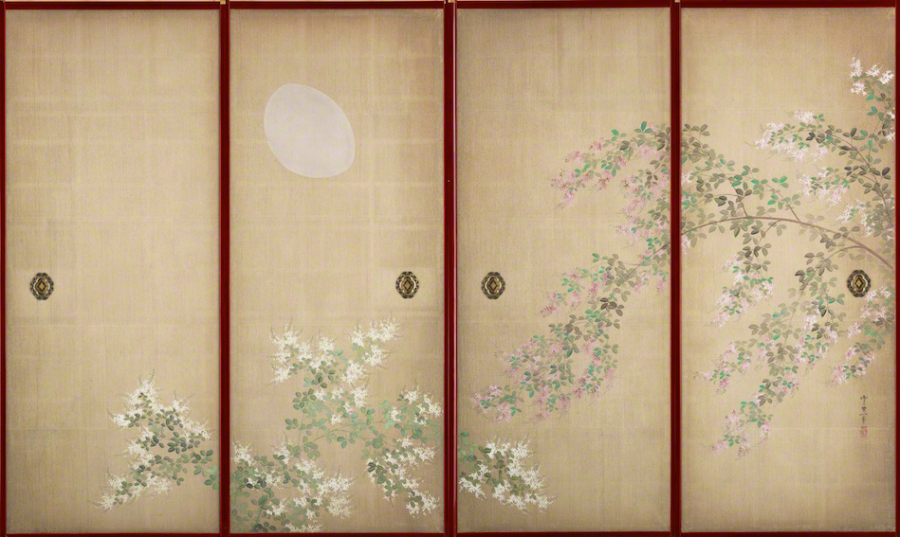
Moon and Pea Blossom (Suzuki Kiitsu) - painting on sliding door
In the 17th century, major Japanese artists such as Honami Kōetsu and Tawaraya Sotatsu founded the Rinpa school, which taught painting in the traditional Heian yamato-e style, with elements from Muromachi ink wash painting, Chinese Ming dynasty bird and flower painting, and the Kanō school of the Momoyama period. Rinpa artists painted on a variety of materials, including folding screens, fans and scrolls, woodblock prints, lacquerware, pottery, and kimono. Many Rinpa paintings were painted on sliding doors and walls of noble families. The Rinpa school was also famous for its half-moon paintings. The Rinpa school's half-moon paintings spread throughout Japan and can be found on clothing and many Edo period handicrafts.
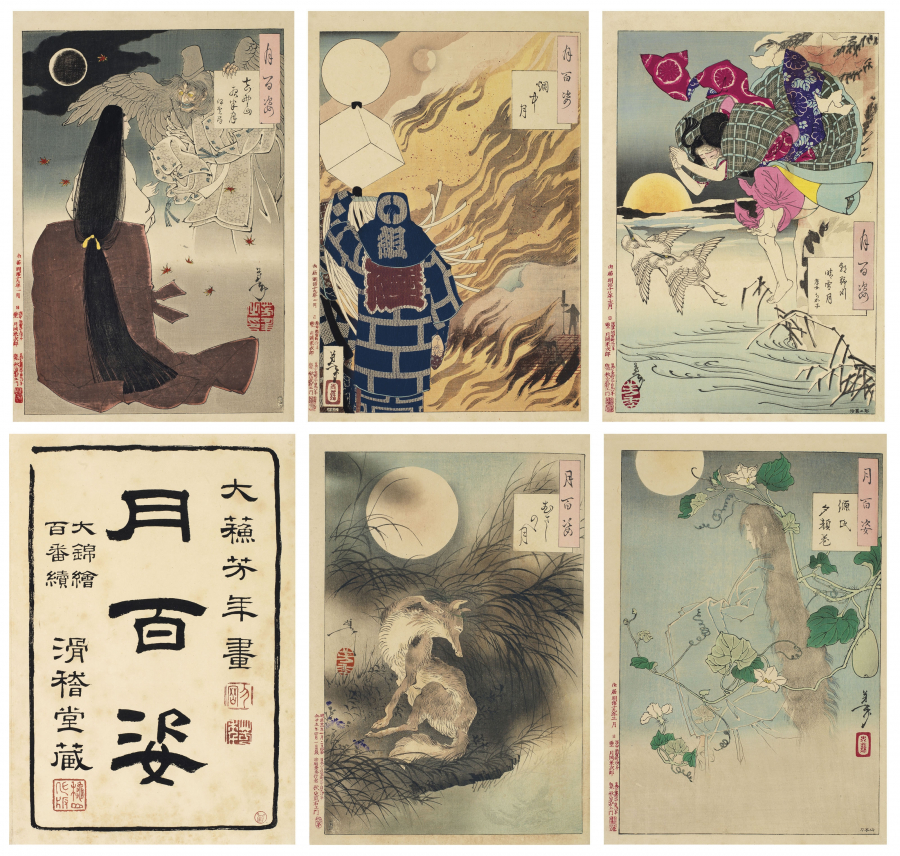
Some paintings in the series One Hundred Aspects of the Moon (1885-1892) by Yoshitoshi
But perhaps the most famous series of ukiyo-e paintings of the moon isHundred Faces of the Moonby the famous artist Tsukioka Yoshitoshi, inspired by 100 famous legends from China, Japan and India, all of which feature a full moon.
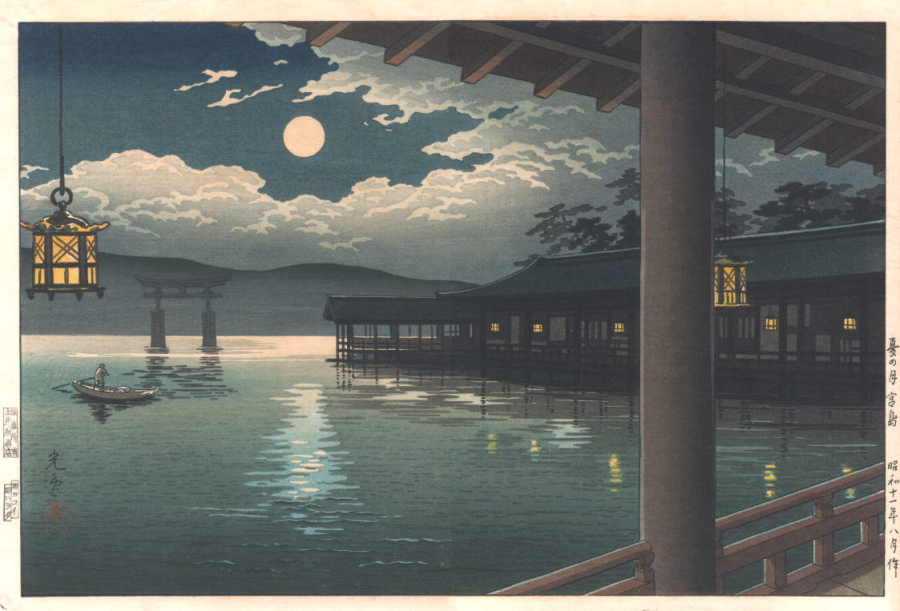
Summer Moon over Miyajima (Tsuchiya Koitsu) painted in the shin-hanga style
By the end of the 19th century, the influence of ukiyo-e in Japan waned as the country entered the Meiji period. Western-style art began to gain popularity with the emergence of many famous Impressionist and Modernist artists. By the 20th century, ukiyo-e had undergone a revival when it was combined with Impressionism to form the shin-hanga (new printmaking) movement.

The moon in the anime Sailor Moon
Despite the many upheavals and changes in art movements, the moon has never been lost in Japanese art. It still has a traditional beauty, but has gradually adapted to modern styles. The moon has also appeared in modern anime and manga, clearly depicted behind swirling clouds or cherry blossoms blowing in the wind.

Moonrise over Katase River (Kasamatsu Shiro)
And when Western artists discovered the image of the moon in ukiyo-e paintings, they also brought a new perspective to the moon. Those paintings of the moon were not simply the moon, but the thoughts and feelings of many generations of Eastern and Western artists throughout thousands of years of history.



























